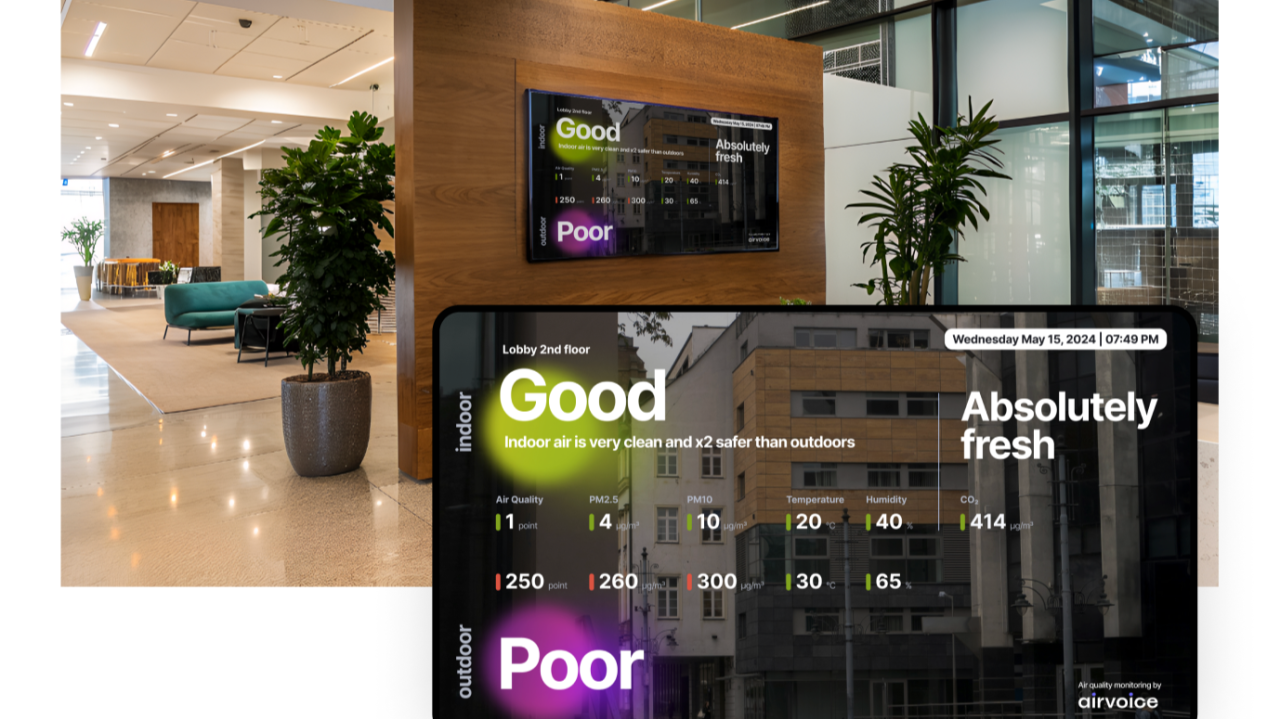"Why might I need to measure the outdoor air quality if my focus is on managing the indoor environment? The ambient air is beyond my control," is a comment we frequently encounter from those just beginning to explore our indoor air quality management solution. So, what value does outdoor air quality data add?
Ambient and indoor air quality are intricately connected. Outdoor air constantly finds its way indoors through the ventilation systems, open windows, and natural building gaps. In many cities, air quality is subpar and can even reach hazardous levels. The air contains a whole bunch of pollutants, in addition PM2.5, PM10 it has smaller particles and different gaseous pollutants like NO2, SO2 and others. Typically, measuring these substances within buildings is bypassed, as it’s seen as excessive and unjustifiably expensive. Yet, ignoring them is perilous as sometimes, the health impact of staying indoors is equivalent to that of being stuck in a traffic jam.
We advocate for the installation of a continuous ambient air quality monitoring station on the roof, beside your mechanical ventilation system’s air intake, or on a corporate terrace. This will provide essential information regarding outdoor air quality, enabling effective indoor environment management. Here are some typical user cases relevant to mechanical and hybrid ventilation systems:
- Strategic management of air filtration systems. With consistent measurements over an appropriate period, seasonal air quality patterns can be discerned. You can identify which pollutants and at what concentrations, affect your indoor environment. This insight aids in making informed decisions regarding the adjustment or upgrading of your indoor air filtration system. For example, according to ASHRAE, MERV13 filters are the current gold standard. However, eradicating NO2 and SO2 requires even more advanced systems. Moreover, MERV13 filters falter when faced with high concentrations of fine dust particles (recall the recent wildfires in Canada?).
- Data-driven decisions for daily indoor air quality management. Real-time monitoring facilitates prompt responses when outdoor air quality falls below certain thresholds. Engineers, when notified of such changes, can decrease ventilation rates to mitigate the negative effects of incoming air on occupants. This data also informs various managerial decisions and recommendations. For instance, if some employees work outdoors, they can be recommended to leave their workplace when outdoor air quality deteriorates.
Understanding the relationship between indoor and outdoor air quality is essential to creating safer and more comfortable indoor spaces. With Airvoice, you can not only deploy a network of accurate indoor sensors, but also complement it with an environmental monitoring station to make more informed decisions to improve your indoor environment.










